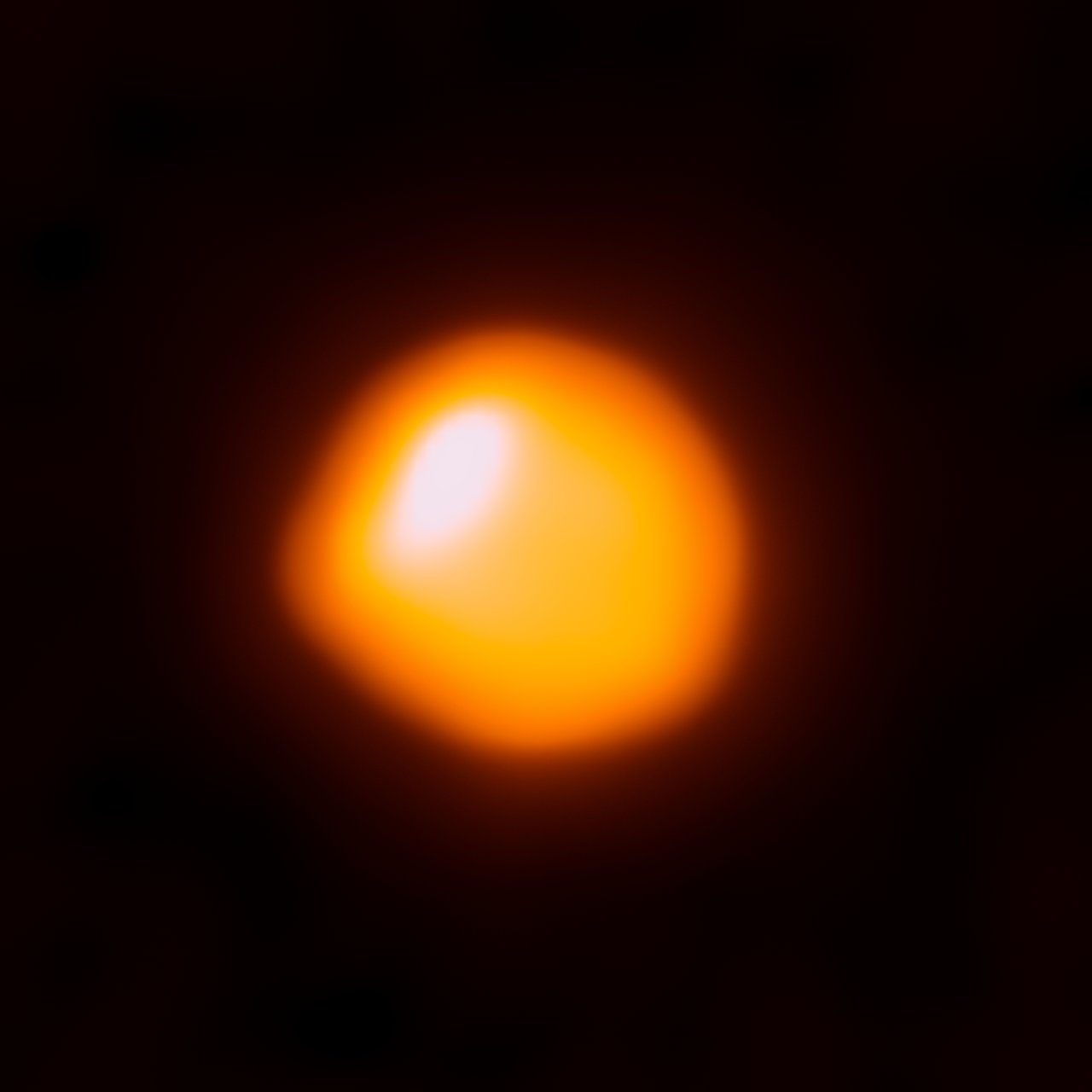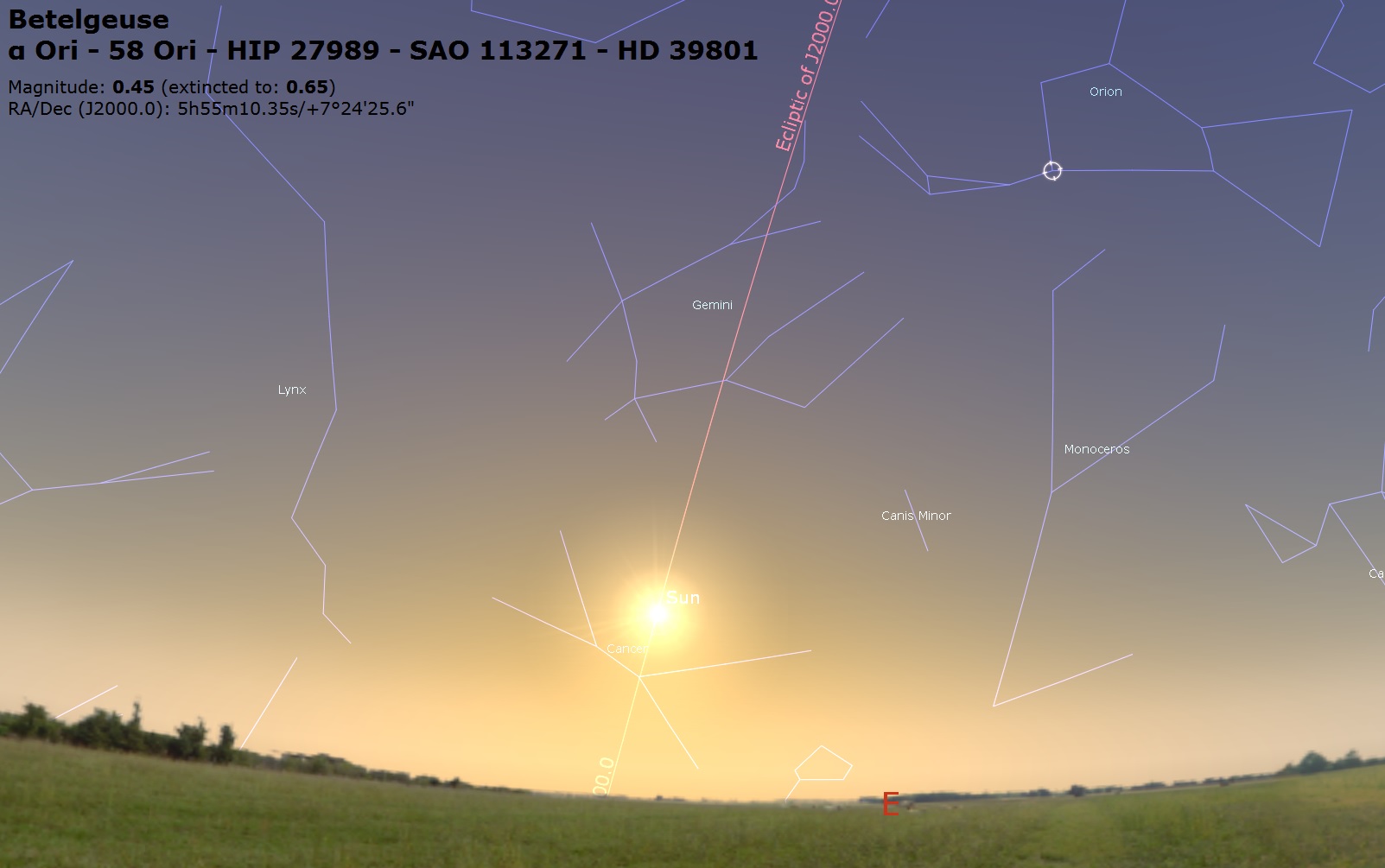
This orange blob is the nearby star Betelgeuse, as imaged recently by the Atacama Large Millimeter/submillimeter Array (ALMA). ALMA/ESO/NRAO
Posted on 06/30/2017 12:59:50 PM PDT by BenLurkin
An angry monster lurks in the shoulder of the Hunter. We’re talking about the red giant star Betelgeuse, also known as Alpha Orionis in the constellation Orion. Recently, the Atacama Large Millimeter Array (ALMA) gave us an amazing view of Betelgeuse, one of the very few stars that is large enough to be resolved as anything more than a point of light.
650 light years distant, Betelgeuse is destined to live fast, and die young. The star is only eight million years old – young as stars go. Consider, for instance, our own Sun, which has been shining as a Main Sequence star for more than 500 times longer at 4.6 billion years – and already, the star is destined to go supernova at anytime in the next few thousand years or so, again, in a cosmic blink of an eye.
An estimated 12 times as massive as Sol, Betelgeuse is perhaps a staggering 6 AU or half a billion miles in diameter; plop it down in the center of our solar system, and the star might extend out past the orbit of Jupiter.
As with many astronomical images, the wow factor comes from knowing just what you’re seeing. The orange blob in the image is the hot roiling chromosphere of Betelgeuse, as viewed via ALMA at sub-millimeter wavelengths. Though massive, the star only appears 50 milliarcseconds across as seen from the Earth. To give you some idea just how small a milliarcsecond is, there’s a thousand of them in an arc second, and 60 arc seconds in an arc minute. The average Full Moon is 30 arc minutes across, or 1.8 million milliarcseconds in apparent diameter. Betelgeuse has one of the largest apparent diameters of any star in our night sky, exceeded only by R Doradus at 57 milliarcseconds.
(Excerpt) Read more at universetoday.com ...



Wow! That’s insanely cool!
Oh, what the heck.


Why is it bulging on the left side? Is it pregnant?................
Something to do with it being about to explode.
Well, it is a Muzzie named star................
It’s a supernova candidate in the near (astronomically) future.
Could blow up tomorrow, or a 100,000 years from now.
It will be very interesting to see.......................by someone....................
Could have already blown up.
There is a suggestion that Betelgeuse has a companion star that is “inside”. When Betelgeuse entered it’s red giant phase, it just swallowed the companion.
The companion, being a star unto it self, just keeps on going.
So goes the suggestion.
Interesting
Good shot! Betelgeuse, live fast die young leave a good looking nebula. (Cat’s Eye)
Apparently due to large convection currents within the star.
The sun has them too but smaller and confined nearer to the surface.
Betelgeuse’s size affects their size they are much larger,
the currents can reach further down into the interior of the star and in turn,
make the star bubble out at its surface to a much greater distance.
The section of the video I saw explaining it is cued at this link..
https://youtu.be/BDB4ZF8jX9Q?t=10m27s
Apparently when it blows the dangerous rays/energy is direct out the poles.
If the poles are pointed at the Earth there would be a problem.
Their investigation of the axis of rotation determined that the poles are aligned 20 degrees away from Earth, so we’re good.
Disclaimer: Opinions posted on Free Republic are those of the individual posters and do not necessarily represent the opinion of Free Republic or its management. All materials posted herein are protected by copyright law and the exemption for fair use of copyrighted works.